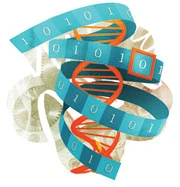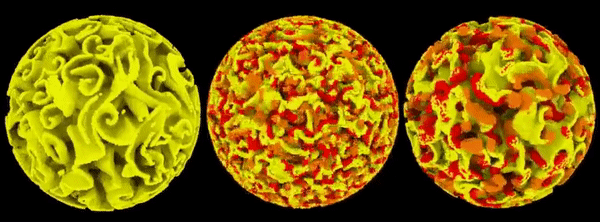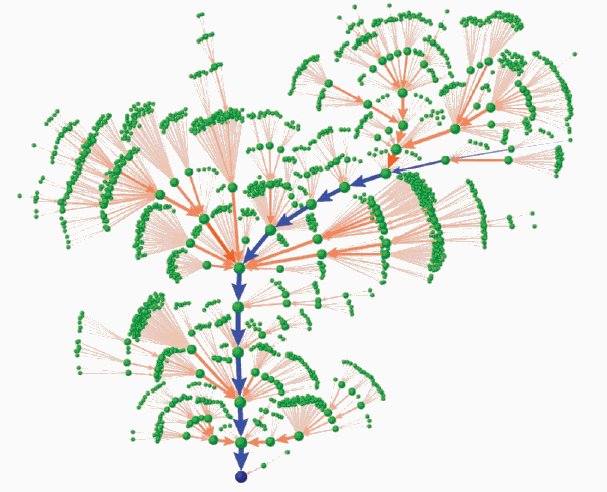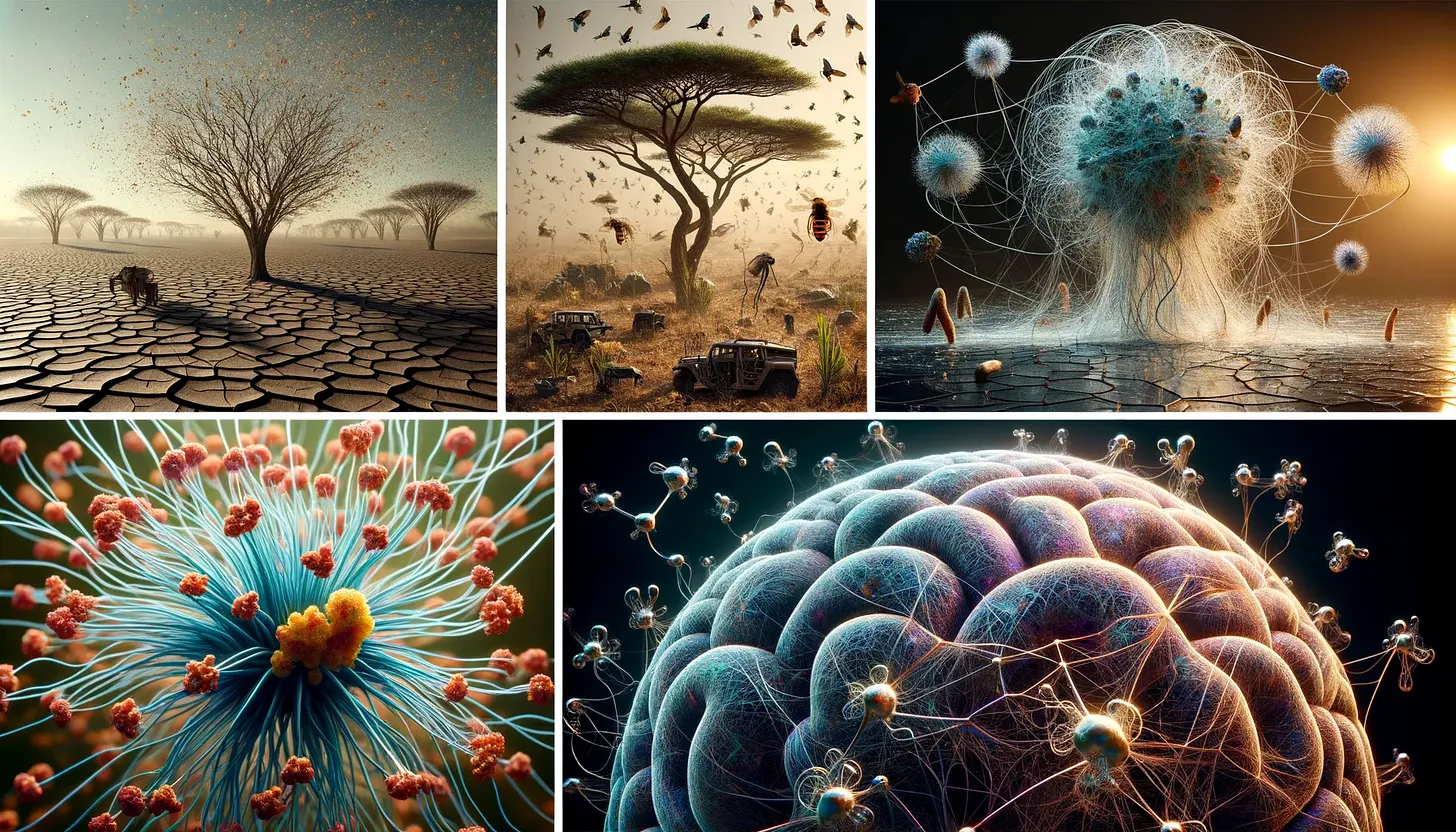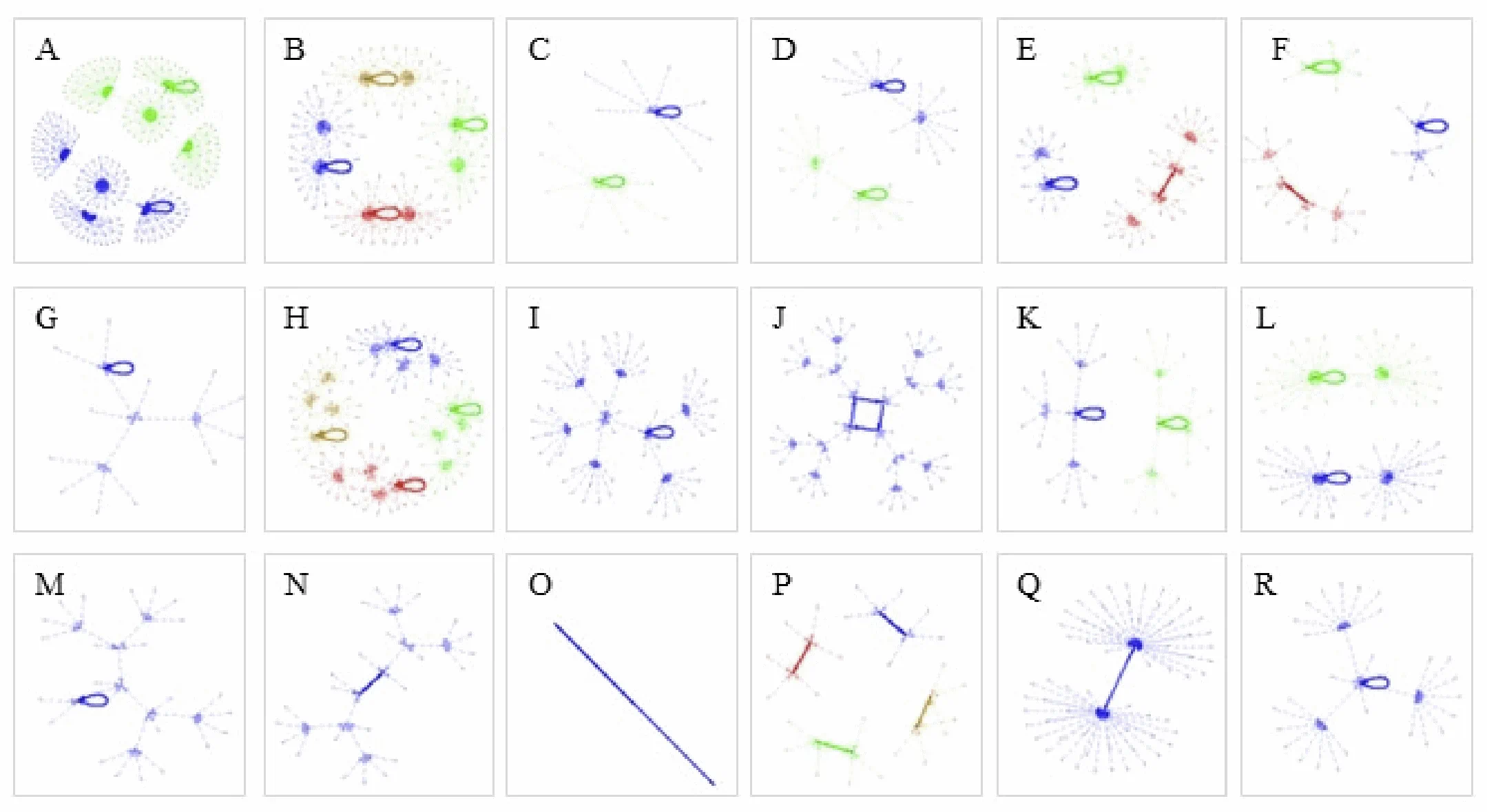Monday, May 05, 2025
Links for "Self-Reproduction and Open-Ended Evolution" Lecture
Cornell Creative Machines Lab: Self replication
Soft Robotics Evolution
An implementation of Von Neumann's Self_reproducing Automata.

Self-Reproducing Loops: from Langton's to Evoloop. Hiroki Sayama's Website and demos.
Self-reproducing loops
Langton's Loop Applet .
Self-reproducing Xenobots.
autocatalytic networks
Lack of evolvability in self-sustaining autocatalytic networks
Darwinian properties and their trade-offs in autocatalytic RNA reaction networks
The invention of writing on Rapa Nui (Easter Island)
Language at the End of the WorldÇ The undecipherable rongorongo script of Easter Island
Labels: #Brenner, #open-endedEvolution, #self-reproduction, #Turing, #VonNeumann, Class Links
Life as a cascade of Machines
Labels: #life, #self-reproduction, #VonNeumann
Evolution of complexity through regulatory variation at a single gene


Labels: #evolution, #Gene
Tuesday, April 29, 2025
Evolution takes multiple paths to evolvability when facing environmental change

Labels: #evolution, #evolvability
Optimal flock formation induced by agent heterogeneity
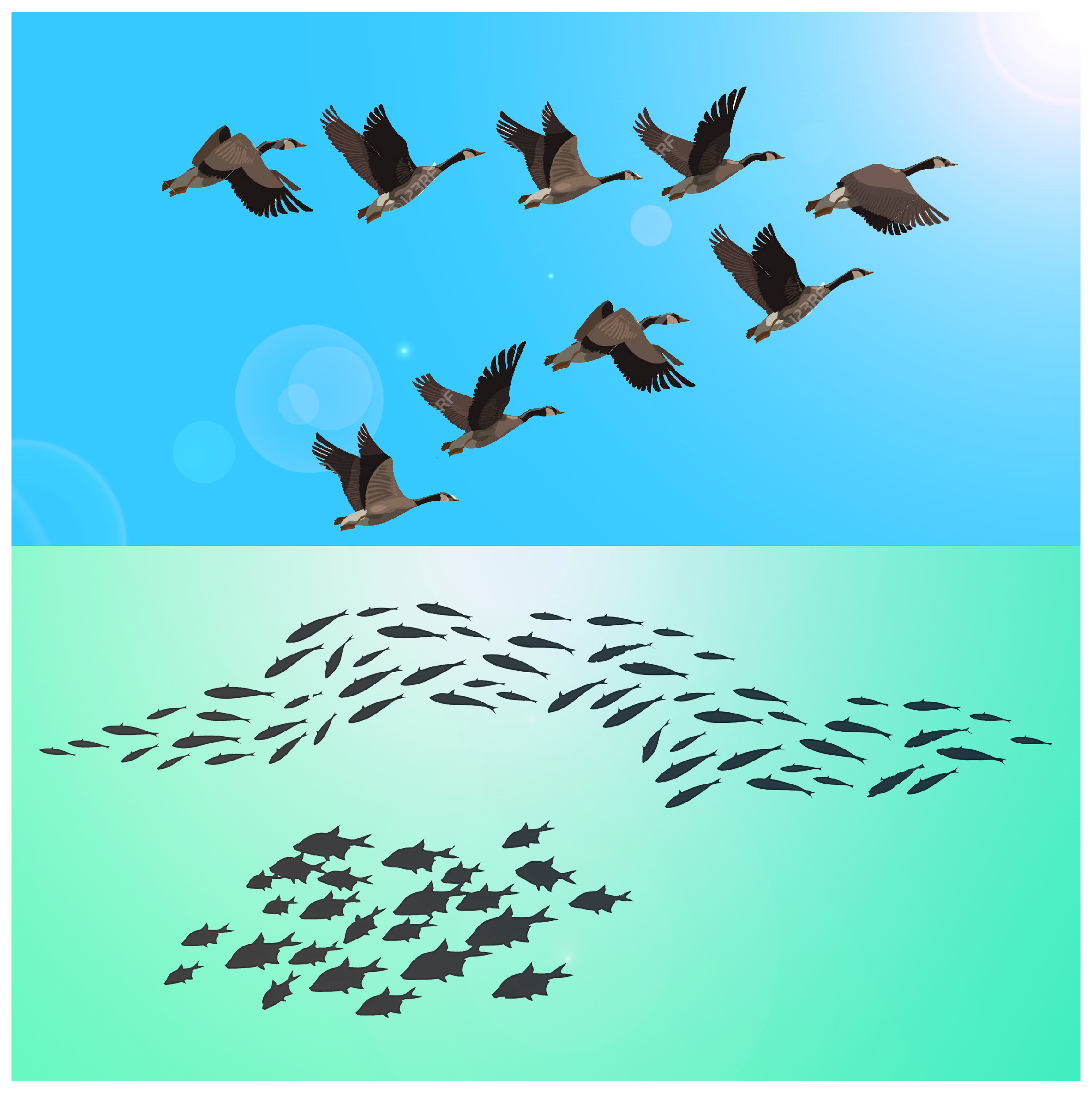
Labels: #collectivebehavior, #flocking
Monday, April 28, 2025
links for "Immune System" lecture
Immune System
Immunology movies at Cells Alive!
An Interpretative Introduction to the Immune System. by S. A. Hofmeyr.
Immunology as information processing. by S. Forrest and S. A. Hofmeyr.
Labels: #adaptiveImmunity, #ArtificialImmuneSystems, #immunesystem, Class Links
Wednesday, April 16, 2025
links for Collective Behavior and Swarms lectures
Chemotaxis, Stigmergy, Termites and Ant Clustering and Sorting
Artificial Termites.
Ant-like task allocation and recruitment in cooperative robots
Cells Solving mazes and optimal paths
Self-generated gradients of chemicals and physical tension, cells in the body steer themselves to vital destinations.
Swarm Robotics @ Bristol Robotics Laboratory.
NetLogo
Artificial Ecosystems
Michael Conrad's Work
PolyWorld
Sim Life and Spore (More on Spore).
Collective Behavior
Boids
Boids Demo. Experiment with different interaction ruleson another demo.
Javascript for Boids. Implementing boids in Python.
EPFL Laboratory for Intelligent Systems
A Swarm of One Thousand Robots
Particle Swarm Optimization
Particle Swarm Optimization Paper by Kennedy and Eberhart..
Particle Swarm Optimization Demos.
Particle Swarm Optimization Visualization by Axel Thevenot.
Software Resources for PSO. PySwarm (Python code). Tutorial for coding PSO in Python.
PSO for prediction of protein-ligand interaction
Ant Colony Optimization Resources
Ant Colony Optimization Demo
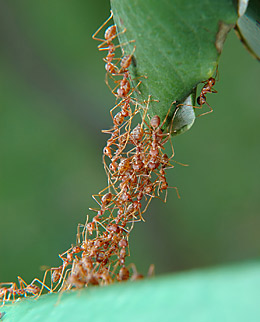
Swarm-bots
Braitenberg (reactive) Vehicles.
Swarm Paintings and a conceptual update (using pheromone fields by Vitorino Ramos).
IdMind. Leonel Moura's robot art including RAP (Robot Action Painter).
Collective Dynamics
Dirk Helbing's Videos and Simulations
Traffic Dynamics in Urban Road Networks and Simulation of Multi-lane traffic. A video with stop-and.go dynamics
Mexican Wave
Simulate Escape Panic. Crowd Turbulence
Pedestrian dynamics: Spontaneous lane formation, congestion and patterns in a simple model for interacting pedestrians
Labels: #AntClusteringAlgorithm, #ants, #Artificialecology, #boids, #ClassLinks, #collectivebehavior, #flocking, #ParticleSwarmOptimization, #Swarms
Full Lecture Notes: Evolutionary Systems
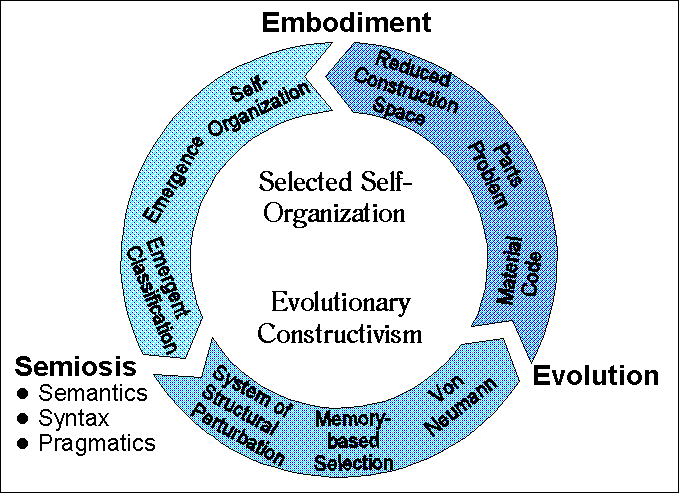
Labels: #evolution, #evolutionaryalgorithms, #selfOrganization, #Semioticclosure, #Semiotics
Lecture Notes: Chapter 6 - Von Neumann and Natural Selection
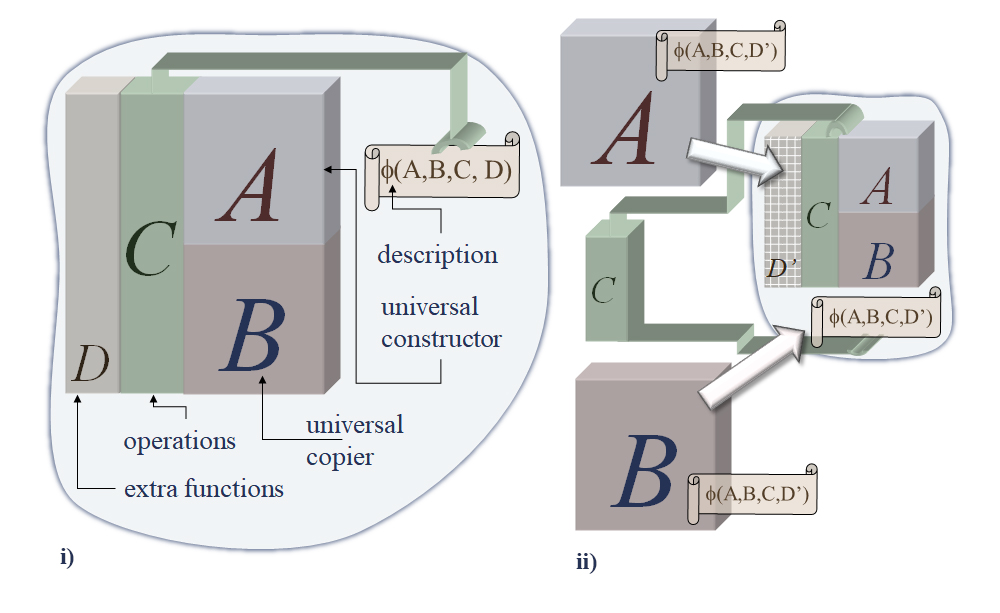
Labels: #cellularAutomata, #Darwin, #evolution, #infomation, #Mendel, #self-reproduction, #Turing, #VonNeumann
Monday, April 07, 2025
Links for "Evolutionary Algorithms" Lectures
Introduction to Genetic Algorithms
Illustrating Evolutionary Computation with Mathematica
Genetic Algorithm Tutorial with Java Code
Genetic Algorithm Walkers
PyGAD - Python Genetic Algorithm and paper with details
Stanley, K.O. et al. [2019]. "Designing neural networks through neuroevolution". Nat Mach Intell 1, 24–35.
Genobots: Generative Representations for Design Automation
The Golem Project
Genetic Programming Resources
Annual "Humies" Awards For Human-Competitive Results Produced By Genetic And Evolutionary Computation
Eureqa models, part of DataRobot: a software tool for detecting equations and hidden mathematical relationships in data. Older version, also at softsea.com.
gplearn: Genetic Programming in Python
Biomorph demo and Python code
Icosystem - The Hunch Engine™
From Artificial Evolution to Artificial Life (1999), Tim Taylor's PhD Dissertation. Check his overview of open-ended evolution.
Evolved Open-Endedness, Not Open-Ended Evolution, By Howard Pattee and Hiroki Sayama
BEACON: Center for the Study of Evolution in Action. biologists, computer scientists, and engineers study evolution as it happens and apply this knowledge to solve real-world problems.
Labels: #Biomorphs, #evolution, #evolutionaryalgorithms, #evolutionaryComputation, #geneticAlgorithms, Class Links
Links for "Evolution, Genes, and the threshold of Complexity" Lecture
Richerson et al. [2021]. "Modern theories of human evolution foreshadowed by Darwin’s Descent of Man". Science372.
Brenner, Sydney. [2012]. "History of Science. The Revolution in the Life Sciences". Science 338 (6113): 1427-8.
Brenner, Sydney. [2012]. "Turing centenary: Life's code script. Nature 482 (7386) (February 22): 461-461.
Al-Hashimi, H. [2023]. "Turing, von Neumann, and the computational architecture of biological machines",PNAS 120 (25) e2220022120.
The virtual Cell
Inside the Cell
Cell Biology at the Biology Project
More on Cells from Wikipedia
The Cell Image Library and highMag
Colonial Algae

Watson and Crick's Molecular structure of Nucleic Acids 1953 article
Journey into DNA
Cracking the Code of Life (PBS Show)
Explore a stretch of code
Interactions between the Translation Machinery and Microtubules
Labels: #Cell, #CellBiology, #dna, #evolution, #information, #SidneyBrenner, #Turing, #VonNeumann, Class Links
Monday, March 31, 2025
Lecture Notes Chapter 5: Life is Stranger than Fiction
Labels: #ArtificialLife, #biocomplexity, #biology, #genetics, #genomics
Monday, March 24, 2025
Links for "Computation in Cellular Automata" lecture
Game of Life Demo
Game of Life Applet
3-D Game of Life
Recursive Universe of Game of Life
Game of Life Reveals Long-Sought Repeating Patterns
Rule 110 and Universal Computation
Computation Theory of Cellular Automata
A Computational Mechanics Reading List by Cosma Shalizi
Labels: #cellularAutomata, #Computation, #DensityTask, #emergentComputation, #GameofLife, #UniversalComputation, Class Links
Lecture Notes (Chapter 4): Self-organization and emergent complex behavior
Labels: #DynamicalSystems, #evolvability, #geneRegulation, #robustness, #self-organization
Monday, March 17, 2025
Links for "Automata Networks, Self-Organization and Criticality Hypothesis" lecture
Random Boolean Networks Tutorial by Carlos Gershenson
Random Boolean Networks Demo by Wolfram
BooleSim by Mathias Bock
Discrete Dynamics Lab
Booleannet tool for simulating biological regulatory networks in a boolean formalism by Istvan Albert.
CANA Control and Redundancy in Boolean Networks by Rion Correia and CASCI.
Muramator Robot
Spontaneous Order and Self Organization @ Scholarpedia
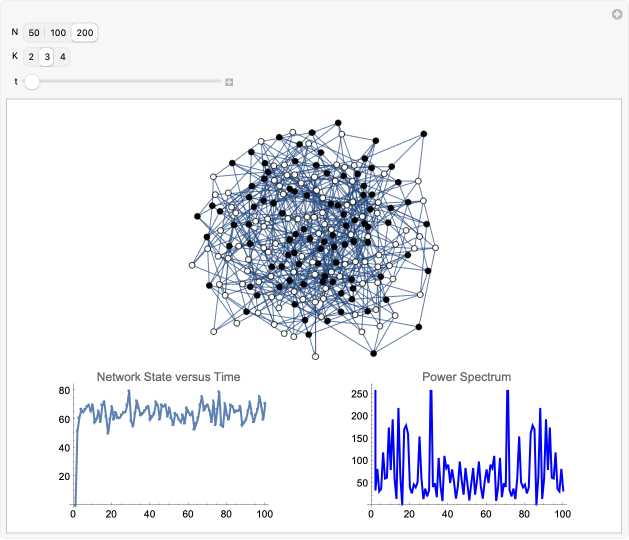
Boolean networks beyond Systems Biology: Musical Morphogenesis
Devin Acker's Elementary CA Demo
Cellular Automata Rules
Cellab
New Kind of Science Applets
Wolfram CA Demos
Langton's Lambda Parameter
Edge Of Chaos CA
Lambda Parameter Applet
Labels: #BooleanNetworks, #cellularAutomata, #edgeOfChaos, #self-organization, Class Links
Tuesday, February 25, 2025
Companion Links for chaos and logistic map lecture
Wolfram demo for the Logistic map and detailed study.
Java Code for Time Series of Logistic Map
GDScript Code for Logistic Map

Andrew Clem ~ Chaos theory contains a very nice explanation of the logistic map and the white bands of periodic behavior inside the chaotic range. Try r=3.84 in the demo used in class, to see a cycle of 3 arise.
See also The birth of period 3, revisited.
Applications of constrained chaos:
Two-dimensional constrained chaos and industrial revolution cycles: "Since the 1760s, at least three industrial revolutions have occurred. To explain this phenomenon, we introduce two-dimensional (2D) constrained chaos. Using a model of innovation dynamics, we show that an industrial-revolution-like technology burst, driven by investment/saving motives for R&D activities, recurs about every one hundred years if the monopolistic use of a new technology lasts about 8 y." Full paper @PNAS.
Non-equilibrium early-warning signals for critical transitions in ecological systems. "We employ landscape-flux theory from nonequilibrium statistical mechanics as a general framework to quantify the global stability of ecological systems and provide warning signals for critical transitions." Full paper @ PNAS.
Labels: #chaos, #logisticMap
Monday, February 24, 2025
Companion links for "Dynamical Systems and Attractor Behavior" lecture
Turing Reaction-Diffusion Model of Morphogenesis by Kele W. Cable: a demo by Chris Jennings .
Graphics Research on Reaction-Diffusion
synthetic texture using reaction-diffusion
Reaction-Diffusion in gene expression of digit determination (in mouse)
Validation of predicted patternsin Turing diffusion (in abiological droplets)
Revising the Turing model with biological evidence (in zebrafish)
Turing-type polyamide membranes for water purification
Expanding theoretical models (ABM and others)
Reaction-Diffusion in various areas.
3-Body Gravitational Problem 3-Body Problem in JavaScript
Lorenz Attractor Demo
Wolfram Projects Demo
Plotting Edward Lorenz's 1963 "Deterministic Nonperiodic Flow" in a 3-dimensional space using mplot3d.
Sensitive dependence on initial conditions in the Lorenz Attractor (Python code). Wolfram Sensitivity To Initial Conditions Demo.
Labels: #Attractors, #chaos, #DynamicalSystems, #Dynamics, #ReactionDiffusion, #Turing
Monday, February 17, 2025
Companion links for Self-Similarity and L-Systems Lecture
- The Koch Curve Fractal, and a generator.
- The Koch Snowflake, and a demo and another.
L-Systems
- A good description and demos by Chris Jennings
- Source Code from Gary Flake's Computational Beauty of Nature Book
- Generate an L-System. An alternative generator, and Another HTML Generator.
- Code for a L-System Explorer
- The Algorithmic Beauty of Plants
- Self-similar syncopations: Fibonacci, L-systems, limericks and ragtime.
- Musical L-Systems by Stelios Manousakis and the Symbolic Composer
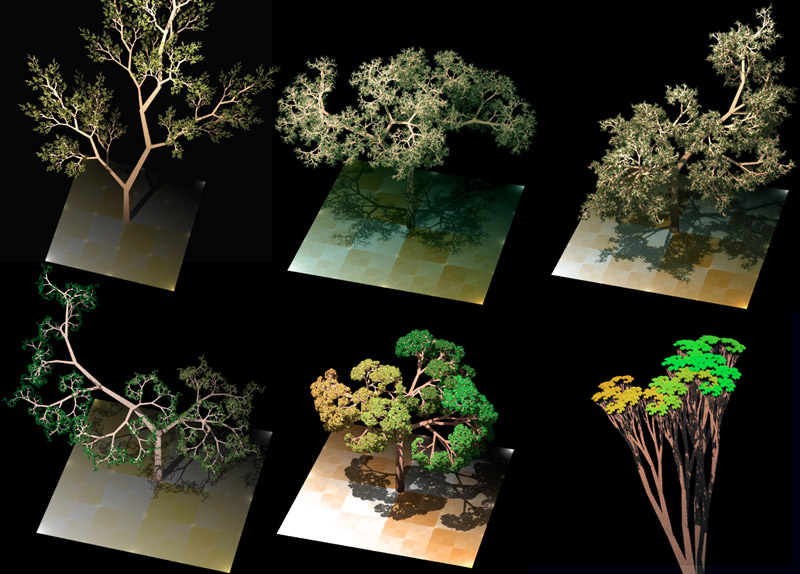
3D Genbots using L-systems
The GOLEM Project.
See also the research pages pages of Karl Sims, Jordan Pollack, Hod Lipson, Josh Bongard, and Dario Floreano.
Labels: #development, #fractals, #Lsystems, #morphogenesis, Class Links
Lecture notes (Chapter 3): Modeling the World and Systems Approach to Life
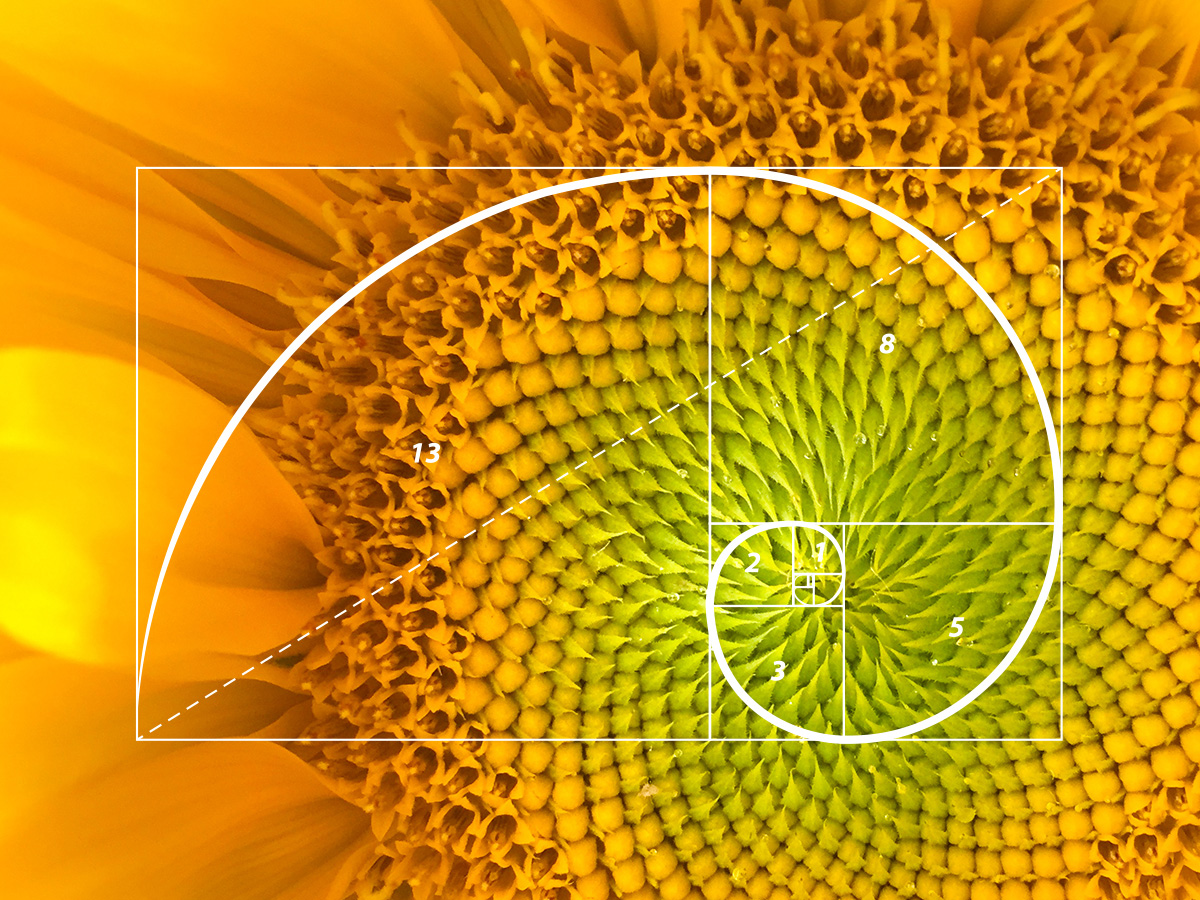
Labels: #artificallife, #computationalBiology, #Hertz, #information, #modeling, #SystemsBiology, #SystemsScience
Friday, February 14, 2025
T cell specificity from partial information

Labels: #immunesystem, #infomation
Thursday, February 13, 2025
LLMs and World Models
Labels: #AI, #InternalModels, #LLM, #modeling
Monday, February 10, 2025
Links for "Modeling Principles of Organization" lecture
- Fibonacci numbers in Nature. The Romanesco Vegetable.
- Fibonacci Spiral Demo. Another Demo.
- Fibonacci Music
The magic of Fibonacci numbers by Arthur Benjamin
Peter Hilton (1923-2010) discusses intriguing number tricks that can be explained by analysing the properties of Fibonacci numbers and the related Lucas numbers. The explanations themselves benefit from further explanations which, in their turn, lead to further discoveries. Recorded at Imperial College London during the 1996 London Mathematical Society Popular Lecture series.
D'Arcy Thompson
- In retrospect: On Growth and Form by Phillip Ball.
- D'Arcy Thompson's Affine Fish Transformations @ Wolfram
- S.J. Gould. [1971] "D'Arcy Thompson and the Science of Form". New Literary History, 2 (2): 229-258
- W. Arthur [2006]. "D'Arcy Thompson and the theory of transformations".Nature Reviews Genetics 7, 401-406.
- Geometry of Growth and Form: Commentary on D'Arcy Thompson
- Java applet for shell sketching
Patterns of Life – D’Arcy Thompson, Structuralism and the Shape of Life
Treasures of the Library 5. D'Arcy Thompson, On growth and form
BLOOMS: Strobe Animated Sculptures Invented by John Edmark from Charlie Nordstrom on Vimeo. "This series of 3D printed sculptures was designed in such a way that the appendages match Fibonacci's Sequence, a mathematical sequence that manifests naturally in objects like sunflowers and pinecones. When the sculptures are spun at just the right frequency under a strobe light, a rather magical effect occurs: the sculptures seem to be animated or alive!"
Labels: #DArcyThompson, #Fibonacci, #modeling, #morphogenesis, #recursion, ClassLinks
Sunday, February 09, 2025
Lecture Notes (Chapter 2): The Logical Mechanisms of Life
Labels: #ArtificialLife, #BiologicalTheory, #ComplexSystems, #GeneralSystems, #SystemsScience, #Theory
Tuesday, January 28, 2025
Self-Assembling Wires
Labels: #self-assembly, #self-organization
Monday, January 27, 2025
Links for Information Lecture 2
Information Theory Tutorial
Letter frequency in English
Word and Letter Frequency in English
Entropy of English
Text Mechanic - Text Manipulation Tools
1952 – “Theseus” Maze-Solving Mouse @ cyberneticzoo.com
Claude Shannon Demonstrating Theseus
Labels: #entropy, #information, #life
Wednesday, January 22, 2025
Mathematicians discover new class of shape seen throughout nature

Labels: #Mathematics, #Morphology
Lecture notes (chapter 1): What is Life?
You can also listen to the AI-produced podcast of this chapter via Google NoteBookLM. Note, the AI-podcast does not substitute the lecture notes at all! it brings up many connections not really in the argument, it is provided for fun only.
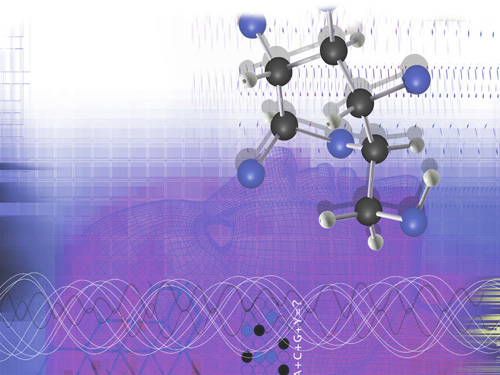
Labels: #artificallife, #bioinspiredcomputing, #ComplexSystems, #evolutionarysystems, #life
Wednesday, May 08, 2024
How DNA encodes the start of transcription

Labels: #code, #dna, #RNA, #TuringTape
Friday, April 19, 2024
Complexity Thoughts
Labels: #complexity
Monday, April 01, 2024
Your Fancy-Pants Brain
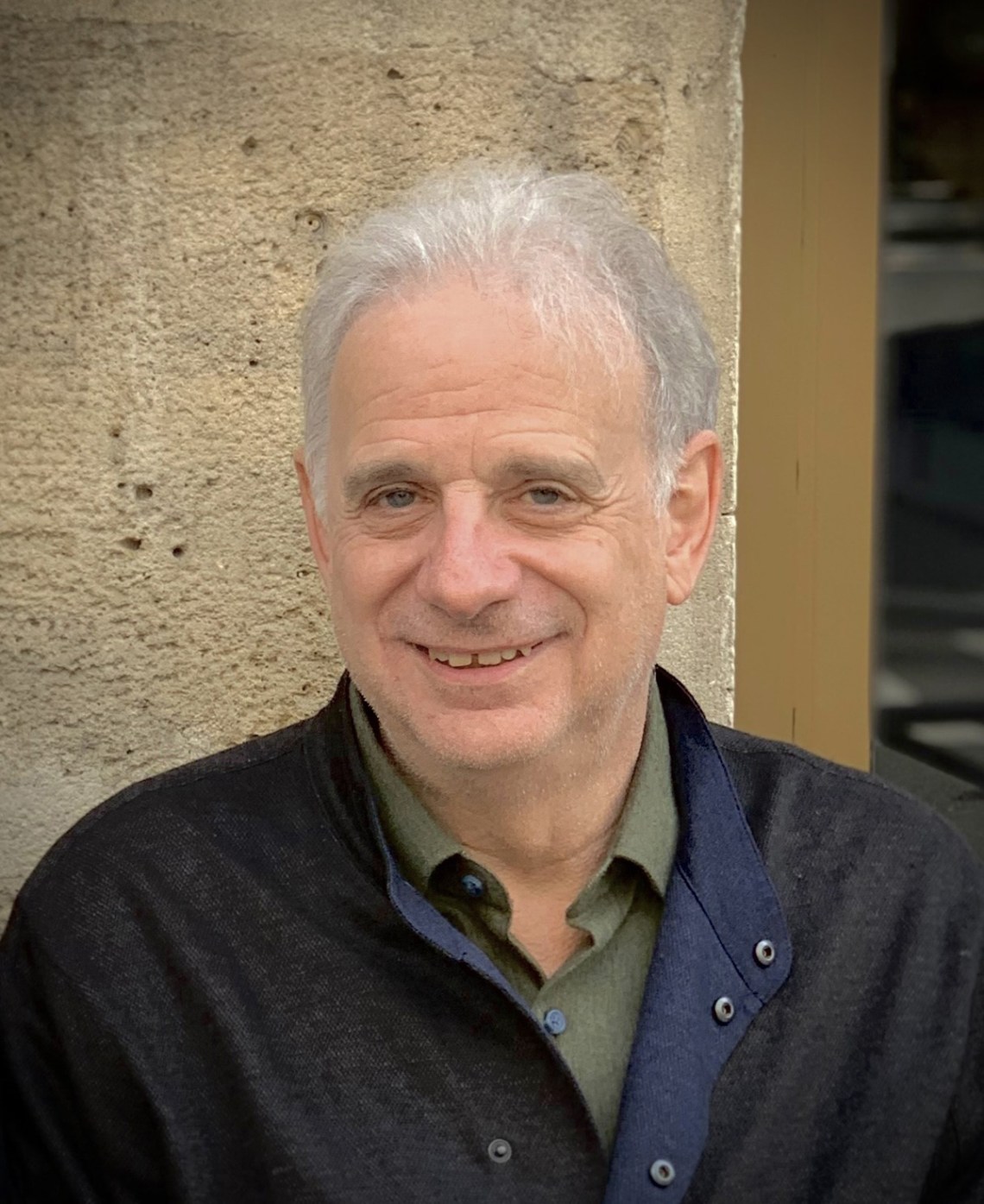
Labels: #ComplexSystems, #emergence, #reductionism
Wednesday, March 20, 2024
Modeling and managing behavior change in groups: A Boolean network method
Labels: #BooleanNetworks, #control, #SocialModels
Saturday, February 17, 2024
Toward first artificial plant genome

Labels: #artificialGenome, #genomics, #SyntheticBiology
Friday, February 02, 2024
Diversity of information pathways drives sparsity in real-world networks
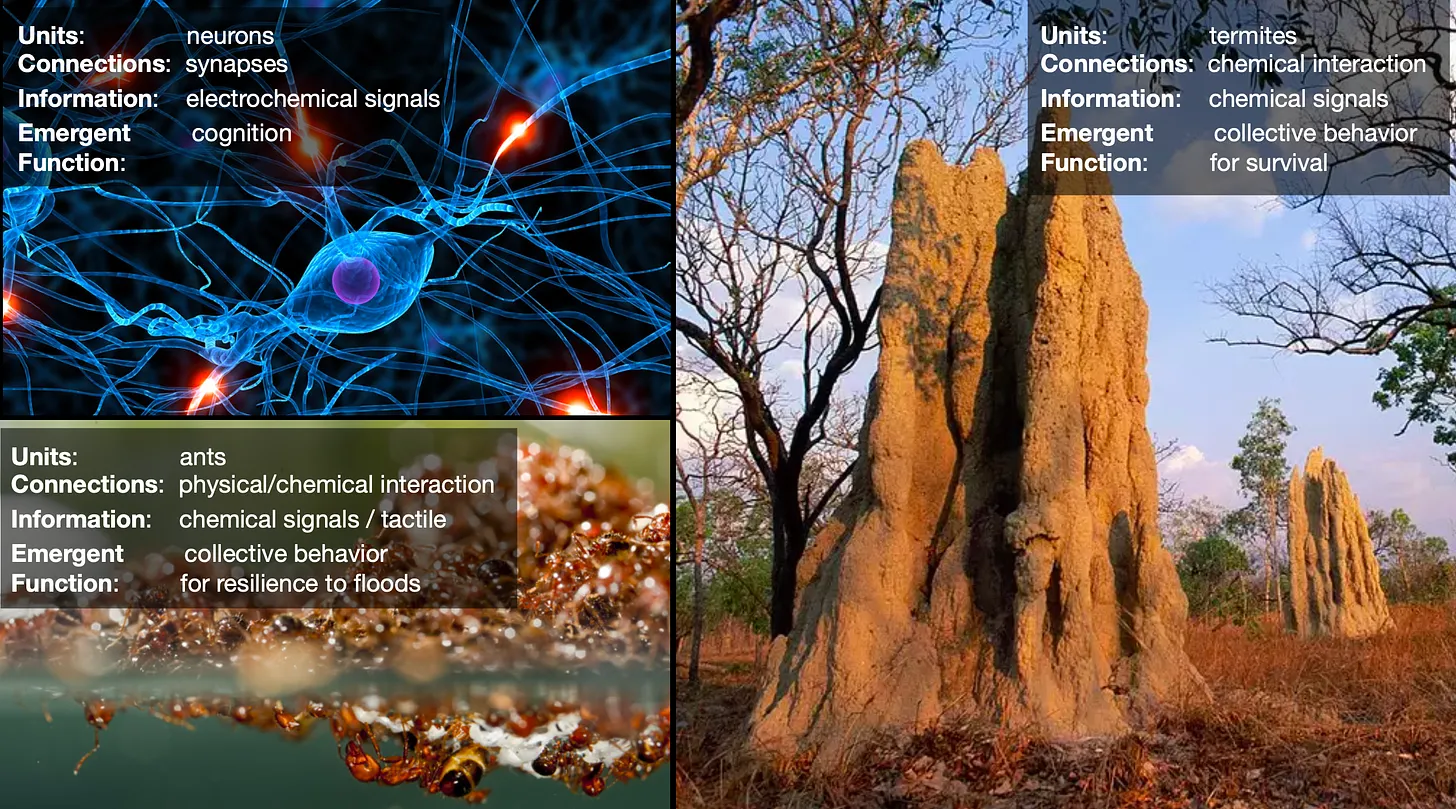
Labels: #ComplexSystems, #information, #thermodynamics
Monday, January 29, 2024
viruslike entities found in human gut microbes

Sunday, September 10, 2023
Genomic Complexity or Variation in Drastic Fitness Changes
Labels: #dna, #evolution, #EvolutionarySystems #Polyploidy #Fitness #GenomeComplexity #Gemome, #GenomicComplexity
Tuesday, April 18, 2023
Multilevel cultural evolution: From new theory to practical applications

Labels: #complexity, #evolution, #MUltilevelSelection
Evolutionary Advantages of RNA Editing
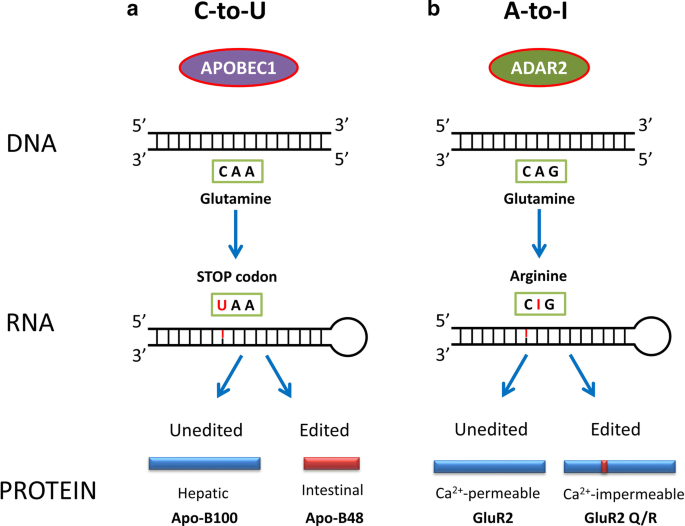
Image from Christofi, T., Zaravinos, A. RNA editing in the forefront of epitranscriptomics and human health. J Transl Med 17, 319 (2019)
Labels: #adaptation, #evolution, #RNA, #RNAEditing
Friday, March 03, 2023
Organoid intelligence
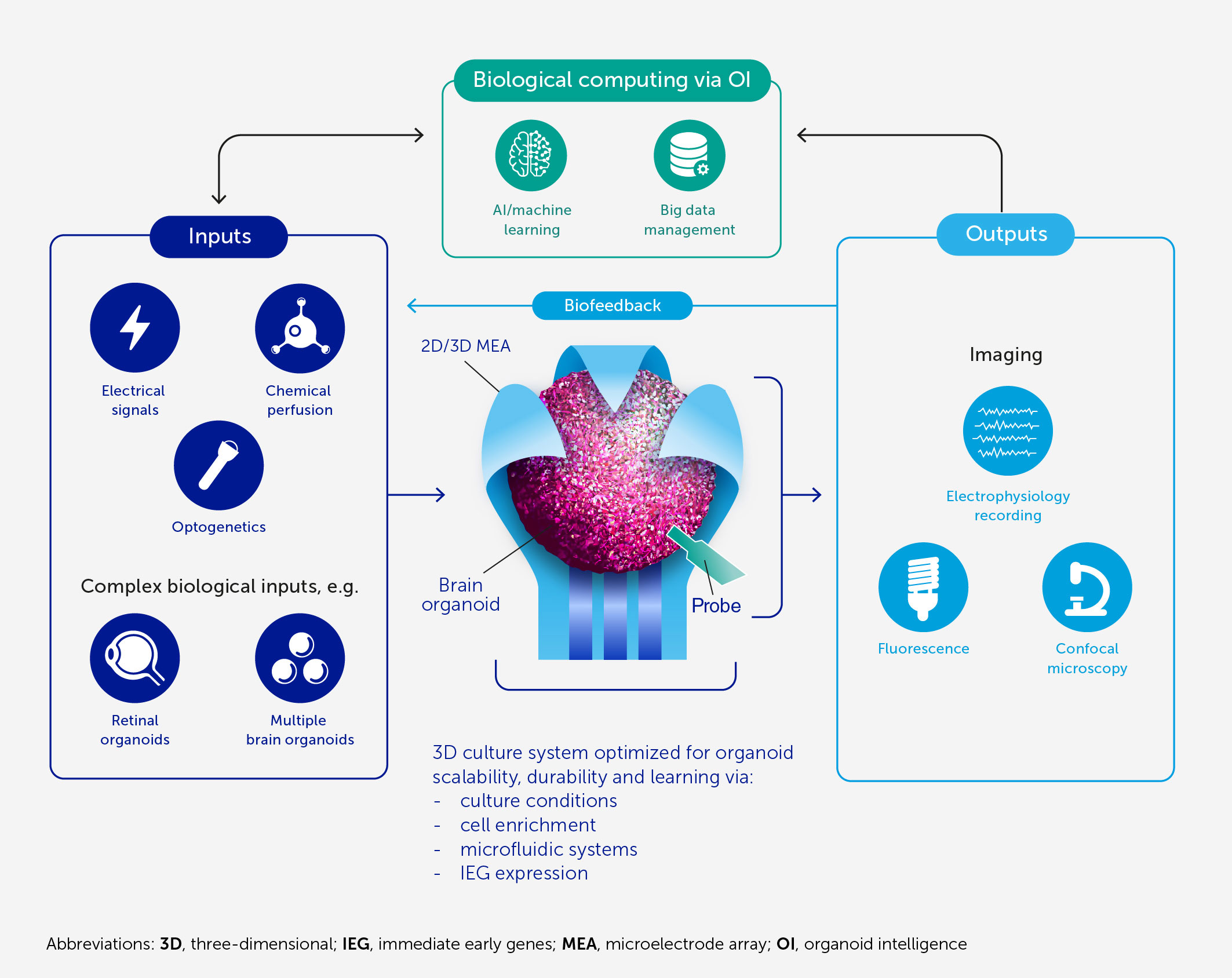
Labels: #AI, #Brain, #organoids, #SyntheticBiology
Thursday, March 02, 2023
Lane formation in Crowd Dynamics

Labels: #Crowddynamics, #Crowds, #self-organization
Wednesday, February 08, 2023
Ants Revisit the Shortest Path Problem

Labels: #ants, #optimization, #ShortestPaths


